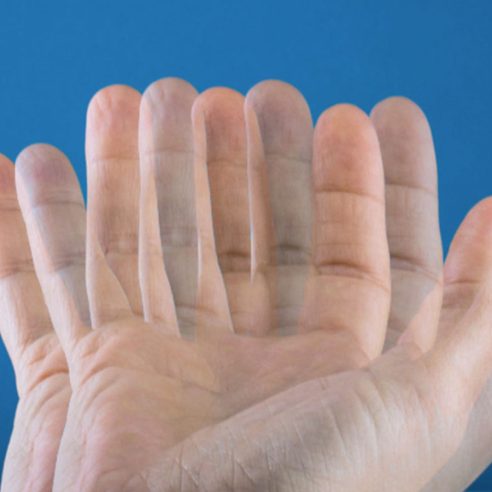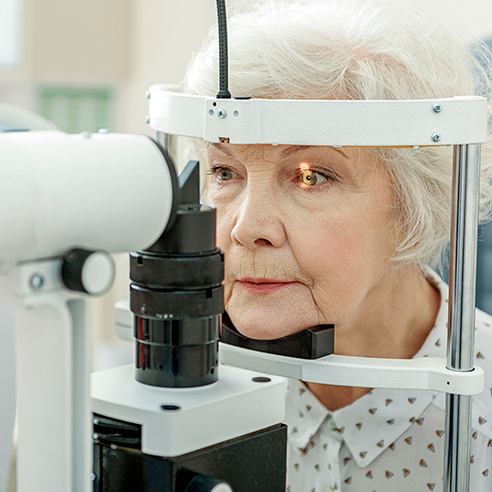
Keratitis (corneal ulcer)
Keratitis, also known as “corneal ulcer”, is an inflammation of the cornea. The causes can be non-infectious and the disease is less severe, or infectious, in which case the symptoms are more severe.
If detected early, keratitis is an easily treatable ophthalmological disorder that heals quickly. Otherwise, the infection can spread to other areas of the eye, even leading to blindness.
It is essential to go for an ophthalmological examination if you notice symptoms of keratitis: eye discomfort, blurred vision, excessive tearing, sensation foreign object or redness of the eyes.
What is keratitis and how many types can it be?
The cornea is like a transparent window, 0.9 mm thick at the edges and 0.5 mm in the center. It covers the iris and pupil of the eye. Its main role is to protect the eye and focus light on the retina.
Keratitis or corneal ulcer occurs when the cornea becomes inflamed. The disease can be of two types, depending on the cause: infectious or non-infectious.
- Non-infectious keratitis can be caused by a minor injury, such as prolonged contact lens wear, improper contact lens hygiene or the insertion of a foreign object into the eye.
- Infectious keratitis is also known as “microbial keratitis” or “bacterial keratitis”, and is caused by bacteria or microbes. It can be passed from person to person by coughing, sneezing or touching contaminated objects. Untreated infectious keratitis carries a high risk of blindness for the patient concerned.
What are the risk factors?
Anyone can get keratitis. However, the main risk factor is contact lenses.
- Contact lenses. They increase the risk of keratitis, both infectious and non-infectious. The problem can have several sources: wearing them longer than recommended, improper disinfection or wearing contact lenses while swimming. Keratitis is more common in people who wear contact lenses continuously than in those who wear them only during the day.
- Weakened immune system. If your immune system is weakened because of an illness or medicines you take, you have a higher risk of getting corneal ulcer.
- Corticosteroids. The use of corticosteroid eye drops to treat an ophthalmological disorder may increase the risk of developing infectious keratitis, or aggravate existing keratitis.
- Eye injuries. If you’ve suffered an injury in the past that affected your cornea, you are more likely to develop keratitis in the future.
What causes keratitis?
Causes of infectious keratitis
- Bacteria (staphylococcus, streptococcus and pseudomonas)
- Fungi or parasites – these organisms can live on the surface of contact lenses or in the lens case. The cornea can become contaminated when the lens is in the eye, causing infectious keratitis.
- Viruses (herpes simplex and shingles)
- Contaminated water (bacteria, fungi and parasites in water – especially from oceans, rivers, lakes and warm water pools – can get into your eyes when you swim. However, the risk of keratitis is reduced if you have a healthy cornea and have not experienced a corneal injury in the past).
Causes of non-infectious keratitis
- Eye damage. An object that scratches or injures the surface of the cornea can lead to non-infectious keratitis. Furthermore, if the injury allows micro-organisms to enter the damaged cornea, the keratitis can become infectious.
- Dry eyes – in this case, the patient has a problem with the tear film, which cannot optimally perform its function of protecting the eye. This results in irritated and dry eye syndrome, which can later lead to keratitis.
- Wearing contact lenses for an extended period of time.
- Presence of a foreign object in the eye.
- Prolonged exposure to ultraviolet light.
- A vitamin A deficiency.
- A disorder of the eyelids.
- Allergies.
What are the symptoms?
Among the most common symptoms of keratitis are:
- Eye discomfort and pain
- Excessive tearing (not to be confused with epiphora)
- Red, irritated eyes
- Sensitivity to light (photophobia)
- Blurred vision
- Problems opening the eyelid due to pain or irritation
- Sensation of foreign object in the eye
- Decreased visual acuity
How is keratitis diagnosed?
If you notice any of the symptoms of keratitis in yourself or a loved one, make an appointment at an ophthalmological clinic. If you wear contact lenses, don’t put them on until you see a specialist. Take your contact lenses and their case with you.
During your basic ophthalmological examination, the doctor will start by asking you questions about your medical history and symptoms. Then, will perform the following tests:
- Visual acuity test (to assess the quality of your vision)
- Flashlight examination (to check pupil reaction, size and other factors)
- Microscope with slit lamp. The instrument emits a light into one eye at a time so that the doctor can closely examine the outside and inside of the eye. The ophthalmologist may apply a fluorescein substance to the surface of the eye to see any damage to the cornea.
- Laboratory tests. The specialist may take a sample of tears or cells from your cornea to send to the laboratory. It may also take a separate sample from the contact lens case. This will help determine the cause of the keratitis and create a treatment plan.
How is keratitis treated?
Because the causes of corneal ulcers are so different, ophthalmologic treatment regimens also vary.
Treatment for non-infectious keratitis
If you’re dealing with a mild case of non-infectious keratitis, the disorder is likely to heal itself. However, it’s imperative that you see a doctor. You may also be advised to use artificial tears (eye drops).
If it’s a more severe non-infectious keratitis and you have excessive tearing and eye pain, you may be prescribed antibiotic eye drops to prevent possible infection.
Treatment of infectious keratitis
- Bacterial keratitis: Depending on the severity of the infection, antibiotic eye drops may be used in mild cases. In moderate or severe cases, oral antibiotics may be prescribed.
- Fungal keratitis: Is treated with antifungal eye drops and oral medicines.
- Viral keratitis: Artificial tears, antiviral eye drops or oral antiviral medicines may be prescribed, depending on the severity of the case.
- Parasitic keratitis: This keratitis can be difficult to treat. Antibiotic drops may be prescribed. A severe case may even require a corneal transplant.
The ophthalmologist may also prescribe corticosteroid eye drops (not in cases of fungal keratitis) after the infection has relieved or disappeared. These drops help reduce inflammation and prevent scarring.
Keratitis surgery
Ophthalmological surgery to treat keratitis involves replacing the damaged cornea with a healthy donor cornea. A corneal transplant is needed if:
- The disease does not respond to medication.
- Corneal scarring severely affects vision.
How do you prevent this eye disorder?
You can reduce your risk of developing keratitis if you:
- Follow the instructions on wearing time, cleaning and disinfection of contact lenses.
- Maintain good hand hygiene (especially before applying contact lenses or if dealing with sick people).
- Do not bathe wearing contact lenses (shower, swim, jacuzzi, etc.).
- Wear safety glasses if you do activities that can cause eye damage.
- Wear sunglasses to protect you from UV light.
Frequently asked questions
1. What are the possible complications of keratitis?
Possible complications of keratitis include:
- Chronic corneal inflammation and scarring.
- Chronic or recurrent viral infections of the cornea.
- Temporary or permanent vision loss.
- Blindness.
2. What is the difference between keratitis and uveitis?
The difference between uveitis and keratitis has to do with the site of inflammation. The signs and symptoms are similar, but uveitis affects the uvea. The uvea is the middle layer of the eye that includes the iris, choroid and ciliary body. Keratitis affects the cornea, the protective layer above the iris.
Another ophthalmological disorder with similar symptoms is conjunctivitis. It affects the conjunctiva, the tissue that “lines” the eyelid. You can have keratoconjunctivitis if the inflammation affects both the cornea and the conjunctiva. Children tend to develop a mild form of this disorder. In this case, a pediatric ophthalmologist examination is mandatory.
The Dr. Holhoș ophthalmology network offers high quality services in its clinics in Cluj-Napoca, Alba-Iulia, Sibiu, Turda and Mediaș. Don’t hesitate to make an appointment for a consultation if you are facing an ophthalmological problem.





































